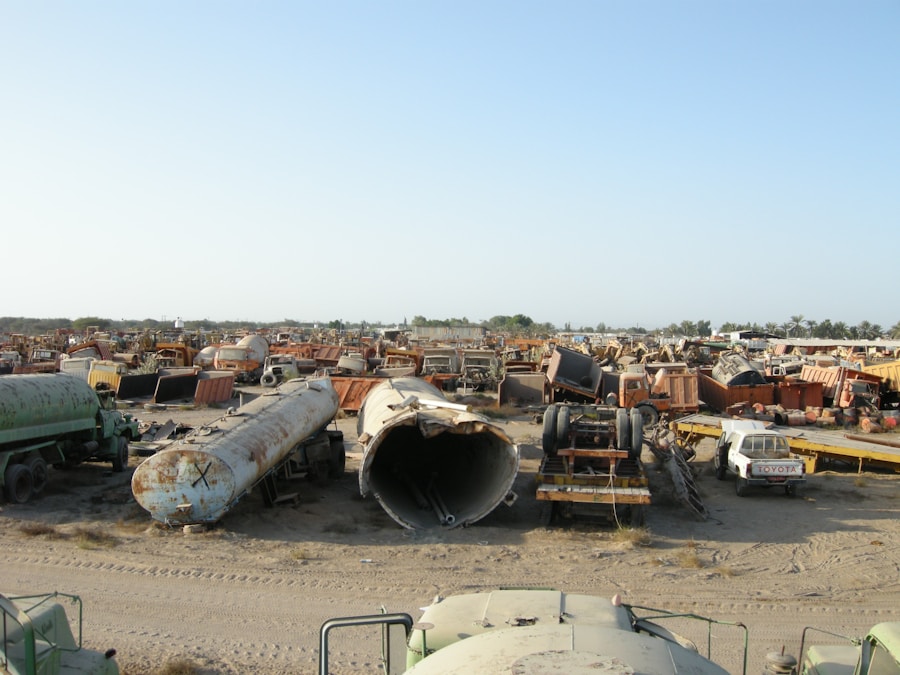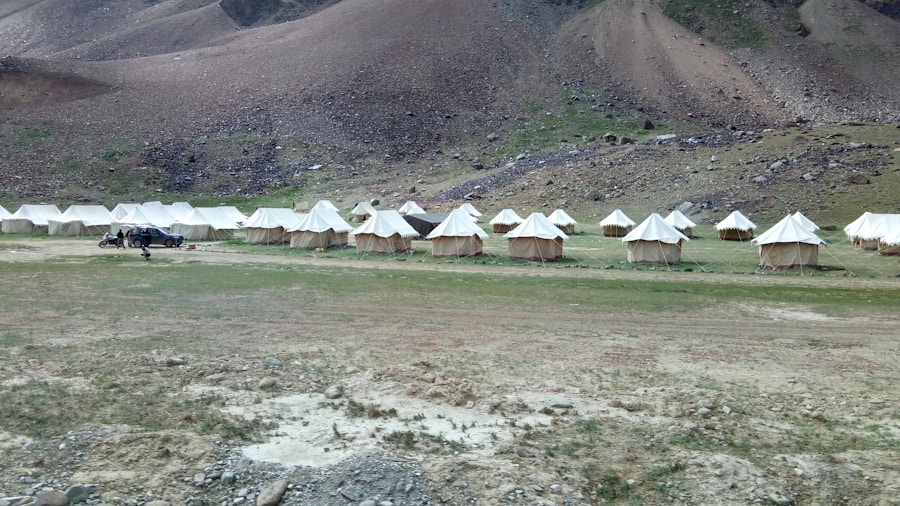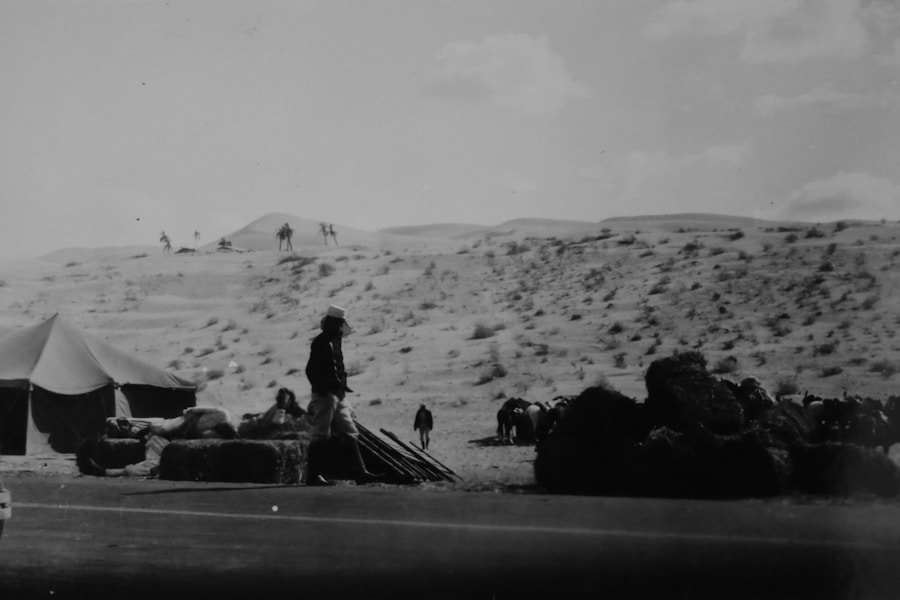Embarking on a pilgrimage can be a transformative experience, but it is essential to recognize the health risks associated with such a journey. Pilgrimages often involve long walks, exposure to varying weather conditions, and sometimes, unfamiliar environments. These factors can lead to physical strain, dehydration, and even injuries.
For instance, individuals may experience blisters, muscle fatigue, or joint pain due to prolonged walking on uneven terrain. Additionally, the risk of heat-related illnesses increases in warmer climates, where pilgrims may underestimate the importance of sun protection and hydration. Moreover, the potential for infectious diseases cannot be overlooked.
Pilgrims may encounter crowded conditions in hostels or communal areas, increasing the likelihood of exposure to viruses and bacteria. Respiratory infections, gastrointestinal issues, and vector-borne diseases are common concerns, particularly in regions where sanitation practices may differ from what one is accustomed to. Understanding these risks is crucial for anyone planning a pilgrimage, as it allows for proactive measures to be taken to ensure a safe and healthy journey.
Key Takeaways
- Understanding the Health Risks:
- Pilgrims should be aware of the potential health risks associated with long journeys, including physical strain, exposure to extreme weather, and crowded conditions.
- It is important to be mindful of common health issues such as dehydration, fatigue, and respiratory infections that can arise during pilgrimages.
- Preparing for the Journey:
- Pilgrims should undergo a thorough medical check-up before embarking on their journey to ensure they are physically fit to undertake the pilgrimage.
- Packing essential medications, first aid supplies, and protective gear such as sunscreen and insect repellent is crucial for a safe and healthy pilgrimage.
- Staying Hydrated and Nourished:
- Maintaining proper hydration and nutrition is essential during the pilgrimage to prevent fatigue, heat stroke, and other health complications.
- Pilgrims should prioritize consuming balanced meals and staying hydrated by drinking plenty of water throughout the journey.
- Managing Chronic Conditions:
- Pilgrims with chronic conditions such as diabetes, hypertension, or asthma should work closely with their healthcare providers to manage their conditions effectively during the pilgrimage.
- It is important to carry an ample supply of medications, monitor blood sugar levels, and be prepared to seek medical assistance if needed.
- Preventing Illnesses:
- Practicing good hygiene, such as frequent handwashing and avoiding close contact with sick individuals, can help prevent the spread of illnesses during the pilgrimage.
- Pilgrims should be mindful of potential health hazards in crowded areas and take precautions to minimize the risk of contracting infectious diseases.
- Seeking Medical Assistance:
- Pilgrims should familiarize themselves with the location of medical facilities along their pilgrimage route and have a plan in place for accessing medical assistance if needed.
- It is important to seek prompt medical attention for any health concerns or symptoms that arise during the pilgrimage.
- Rest and Recovery:
- Adequate rest and recovery periods are essential for pilgrims to recharge and prevent physical and mental exhaustion during the journey.
- Pilgrims should prioritize getting enough sleep and taking breaks to rest and recuperate, especially after long periods of walking or physical exertion.
- Post-Pilgrimage Health Care:
- After completing the pilgrimage, it is important for pilgrims to continue monitoring their health and seek follow-up care if needed to address any lingering health issues.
- Pilgrims should also take time to rest and recover from the physical and emotional toll of the journey, allowing their bodies to fully recuperate.
Preparing for the Journey
Preparation is key to a successful pilgrimage, and this extends beyond physical training to include health considerations. Before setting out, it is advisable to undergo a thorough medical check-up. This assessment can help identify any pre-existing conditions that may require special attention during the journey.
For example, individuals with cardiovascular issues should consult their healthcare provider about their fitness for long-distance walking and may need to adjust their medication regimen accordingly. In addition to medical evaluations, physical conditioning plays a vital role in preparing for the rigors of a pilgrimage. Gradually increasing walking distances and incorporating strength training can enhance endurance and reduce the risk of injury.
It is also beneficial to practice walking with a loaded backpack to simulate the conditions of the pilgrimage. This preparation not only builds physical stamina but also helps pilgrims become accustomed to carrying their supplies, which can include food, water, and first-aid kits.
Staying Hydrated and Nourished

Hydration is one of the most critical aspects of maintaining health during a pilgrimage. Pilgrims often underestimate their fluid needs, especially when walking long distances in hot weather. It is essential to drink water regularly rather than waiting until thirst sets in.
Carrying a reusable water bottle can facilitate this practice, allowing for easy access to hydration throughout the day. In addition to water, electrolyte-rich drinks can help replenish lost minerals and maintain energy levels. Nourishment is equally important; a balanced diet can significantly impact a pilgrim’s stamina and overall well-being.
Consuming a variety of foods that provide carbohydrates, proteins, and healthy fats is essential for sustaining energy levels during long walks. Whole grains, nuts, fruits, and vegetables should be staples in a pilgrim’s diet. Additionally, planning meals ahead of time can help avoid reliance on unhealthy convenience foods that may be available along the route.
Packing nutritious snacks such as trail mix or energy bars can provide quick energy boosts when needed.
Managing Chronic Conditions
For individuals with chronic health conditions, careful management is crucial during a pilgrimage. Conditions such as diabetes, asthma, or heart disease require specific attention to ensure that symptoms do not interfere with the journey. For instance, diabetics must monitor their blood sugar levels closely and plan meals and snacks accordingly to avoid hypoglycemia or hyperglycemia.
Carrying necessary medications and supplies, such as insulin or glucose tablets, is vital for managing these conditions effectively. Asthma sufferers should also take precautions by carrying their inhalers at all times and being aware of potential triggers along the route. Changes in altitude or exposure to allergens can exacerbate symptoms, so being prepared with an action plan can help mitigate risks.
Preventing Illnesses
Preventing illnesses during a pilgrimage requires vigilance and proactive measures. Vaccinations may be necessary depending on the destination; for example, travelers heading to certain regions may need immunizations for diseases such as hepatitis A or typhoid fever. Consulting with a travel medicine specialist can provide tailored advice based on individual health history and travel plans.
Practicing good hygiene is another critical aspect of illness prevention. Pilgrims should wash their hands frequently with soap and water or use hand sanitizer when soap is unavailable. This practice is particularly important before eating or after using public facilities.
Additionally, being cautious about food and water sources can help prevent gastrointestinal issues; drinking bottled water and avoiding street food in areas with questionable sanitation can reduce the risk of foodborne illnesses.
Seeking Medical Assistance

Despite careful preparation and preventive measures, there may be times when medical assistance is necessary during a pilgrimage. Knowing how to access healthcare services along the route is essential for addressing any health concerns that arise. Pilgrims should familiarize themselves with local healthcare facilities or clinics in advance and keep emergency contact numbers handy.
In case of injury or illness, it is crucial to listen to one’s body and seek help promptly rather than pushing through discomfort. For example, if a pilgrim develops severe pain or swelling in their legs, it could indicate a more serious condition that requires immediate attention. Understanding when to seek medical assistance can prevent complications and ensure that pilgrims can continue their journey safely.
Rest and Recovery
Rest is an often-overlooked component of health during a pilgrimage. While the desire to cover long distances may be strong, allowing time for recovery is essential for maintaining energy levels and preventing burnout. Pilgrims should schedule regular breaks throughout the day to rest their feet and hydrate adequately.
Finding suitable places to rest—such as parks or shaded areas—can enhance recovery during long walks. Additionally, incorporating rest days into the pilgrimage itinerary can provide significant benefits. These days allow for physical recovery as well as opportunities for mental rejuvenation.
Engaging in light activities such as stretching or yoga can also aid recovery while keeping muscles limber. Prioritizing rest not only enhances physical well-being but also contributes to a more enjoyable pilgrimage experience.
Post-Pilgrimage Health Care
After completing a pilgrimage, it is important to continue caring for one’s health as the body adjusts back to normal routines. Many pilgrims may experience fatigue or soreness after long periods of physical exertion; therefore, allowing time for recovery is essential. Engaging in gentle exercises such as walking or swimming can help ease muscle tension while promoting overall well-being.
Furthermore, scheduling a follow-up appointment with a healthcare provider can be beneficial for those who managed chronic conditions during the pilgrimage or experienced any health issues along the way. This check-up allows for an assessment of any lingering effects from the journey and ensures that any necessary adjustments to treatment plans are made promptly. Additionally, reflecting on the experience—both physically and emotionally—can provide valuable insights into personal health management moving forward.
In conclusion, embarking on a pilgrimage requires careful consideration of various health aspects before, during, and after the journey. By understanding potential risks, preparing adequately, managing chronic conditions effectively, preventing illnesses proactively, seeking medical assistance when needed, prioritizing rest, and ensuring proper post-pilgrimage care, individuals can enhance their overall experience while safeguarding their health throughout this meaningful journey.
If you are looking for a luxurious travel experience after completing your pilgrimage, consider indulging in the pure luxe of Punta Mita with Royal Aurora Tours. This article highlights the stunning beauty and upscale amenities of Punta Mita, making it the perfect destination for relaxation and rejuvenation after the physical and spiritual challenges of Hajj and Umrah. Check out this article for more information on how to treat yourself to a well-deserved getaway.
FAQs
What are the common health challenges during Hajj and Umrah?
Common health challenges during Hajj and Umrah include heat exhaustion, dehydration, respiratory infections, and musculoskeletal injuries due to the physical demands of the pilgrimage.
How can pilgrims prevent heat exhaustion and dehydration during Hajj and Umrah?
Pilgrims can prevent heat exhaustion and dehydration by staying hydrated, wearing appropriate clothing, seeking shade during peak sun hours, and avoiding strenuous activities during the hottest parts of the day.
What measures can be taken to prevent respiratory infections during Hajj and Umrah?
To prevent respiratory infections, pilgrims should practice good hand hygiene, avoid close contact with individuals who are sick, and consider wearing a mask in crowded areas.
What are some tips for managing musculoskeletal injuries during Hajj and Umrah?
Pilgrims can manage musculoskeletal injuries by wearing comfortable and supportive footwear, taking regular breaks to rest and stretch, and seeking medical attention if an injury occurs.
What should pilgrims do if they require medical assistance during Hajj and Umrah?
Pilgrims should familiarize themselves with the location of medical facilities in the area, carry necessary medications and medical supplies, and seek prompt medical attention if they experience any health concerns.



0 Comment